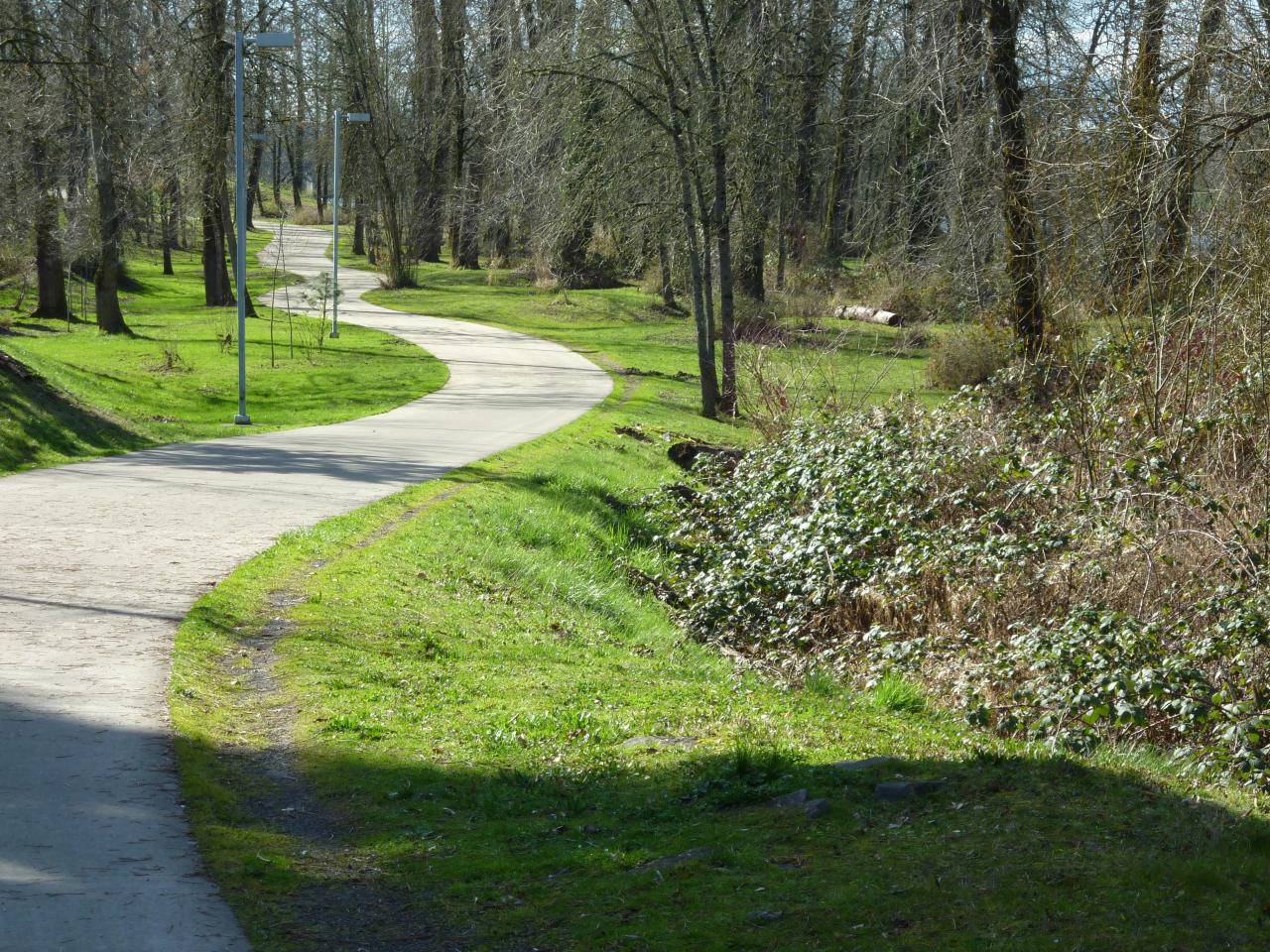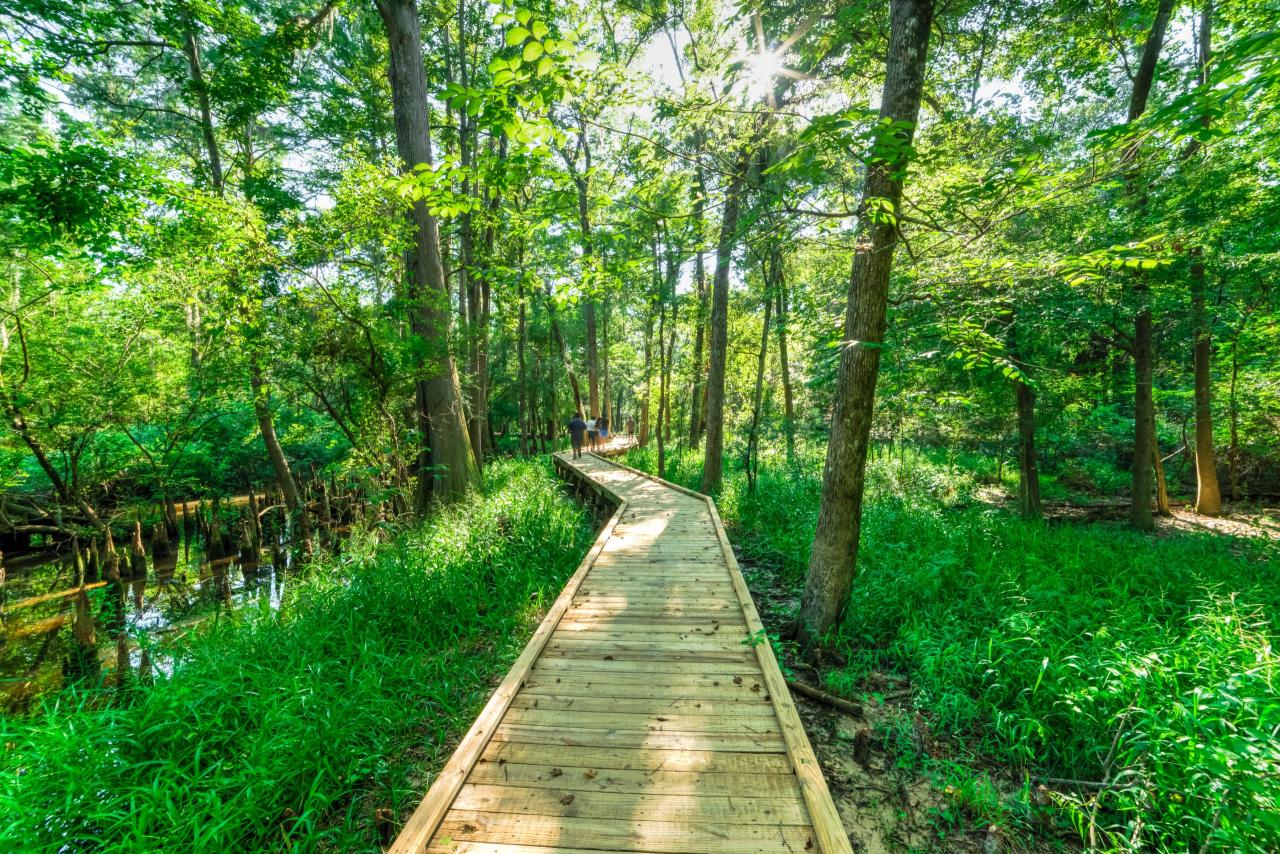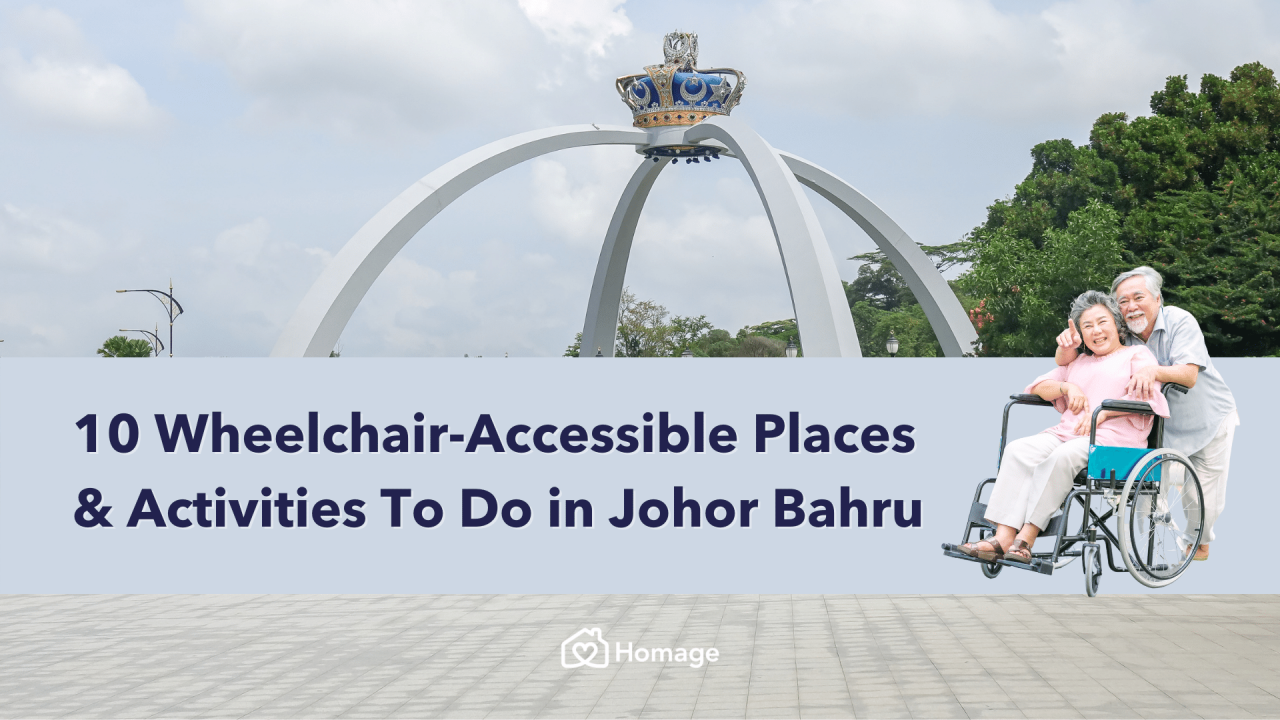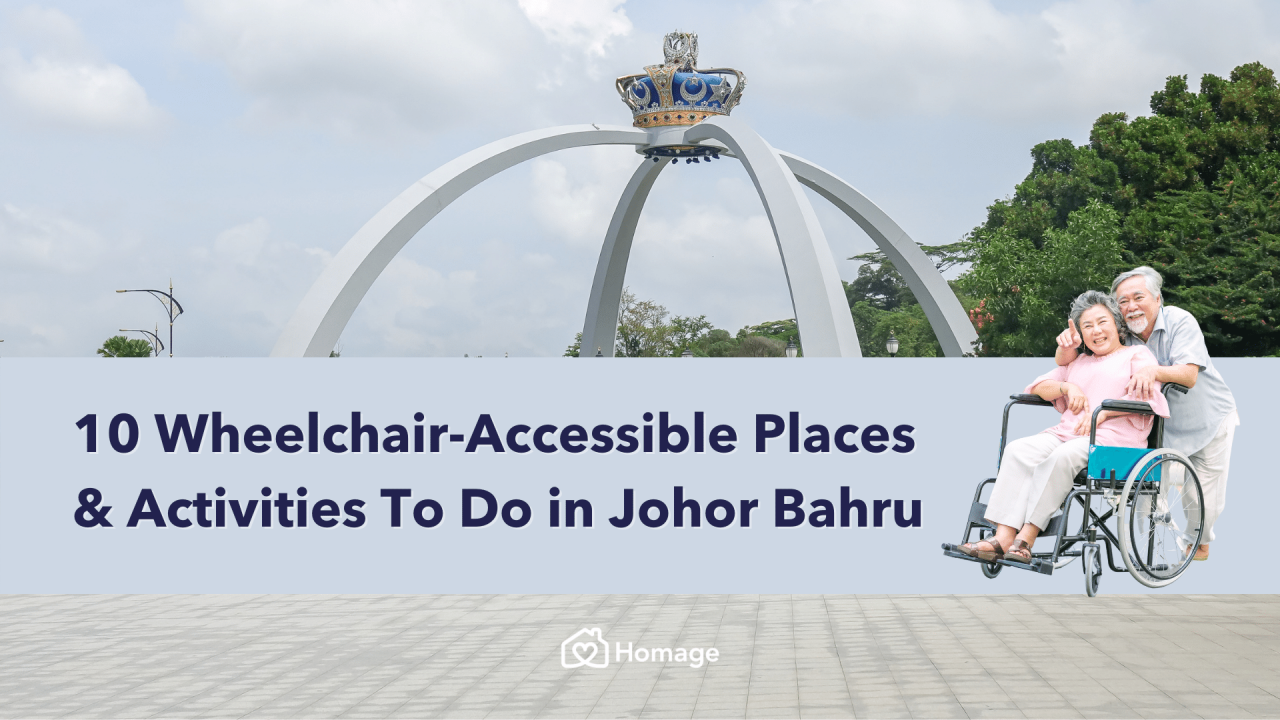Accessible walking trails near me suitable for wheelchairs or strollers – Accessible Walking Trails Near Me: Wheelchair & Stroller Friendly – sounds boring, right? Wrong! Prepare for a thrilling adventure (well, a
-relatively* thrilling one, depending on your definition of “thrilling”). We’re not just talking about flat, featureless paths; we’re diving into a world of surprisingly diverse and delightful accessible trails, perfect for everyone from seasoned wheelchair warriors to stroller-pushing parents who deserve a break from the playground.
Get ready to discover hidden gems, conquer gentle inclines (or gracefully avoid them), and maybe even make a new friend or two along the way.
This guide is your passport to exploring the great outdoors without the usual accessibility hassles. We’ll uncover the secrets to finding the perfect trail for your needs, from understanding the nuances of “accessible” (because, let’s face it, “accessible” means different things to different people) to mastering the art of online trail scouting. We’ll also arm you with essential tips and tricks, from weather-proofing your adventure to knowing what to pack for a smooth and enjoyable experience.
So grab your wheels (or your stroller!), and let’s hit the trails!
Defining “Accessible” for Trails
So, you’re looking for a trail that’s not just scenic, but also suitable for wheelchairs and strollers? Excellent choice! Let’s dive into what makes a trail truly accessible, because “accessible” isn’t just a buzzword; it’s a promise of smooth sailing (or rolling, in this case). We’ll unravel the mysteries of gradients, surface types, and those all-important resting spots.
Accessibility on trails means ensuring everyone, regardless of mobility, can enjoy the experience. This goes beyond just a “mostly flat” path; it requires careful consideration of various factors to create a truly inclusive environment. Think of it as a well-planned adventure, not an obstacle course!
Accessibility Features for Wheelchairs and Strollers
Creating accessible trails involves a multi-pronged approach. It’s not just about the surface; it’s about the whole experience. We need to consider the surface material, its slope, the width of the path, and the provision of regular rest stops. Think of it like building a fantastically inclusive playground for grown-ups (with slightly less screaming, hopefully).
Surface Types: Smooth, hard surfaces like asphalt or concrete are ideal for wheelchairs, offering the least resistance. Gravel can work, but the size and consistency of the gravel are crucial; too large, and it’s a bumpy ride. Natural surfaces like dirt or grass are generally not suitable for wheelchairs due to unevenness and potential for getting stuck.
Finding accessible walking trails near me, suitable for wheelchairs or strollers, can be a breeze! But if you fancy a bit more historical pizzazz with your stroll, check out these scenic options – for a truly grand adventure, see the amazing historical sites listed on this website: scenic walking trails near me with historical landmarks or points of interest .
Then, once you’ve soaked up the history, you can head back to those smooth, accessible paths, ready for a well-deserved rest!
Gradients: Steep inclines are a major challenge for wheelchairs. A gentle, even gradient is key. A good rule of thumb is to aim for no more than a 5% grade (for every 100 feet of horizontal distance, the elevation changes by no more than 5 feet). Strollers, while generally more adaptable, still struggle with steep grades, especially when loaded with a child and belongings.
Width Requirements: A minimum width of 48 inches (122 cm) is recommended to accommodate wheelchairs and allow for safe passing. Narrower paths can create bottlenecks and frustrating encounters.
Resting Areas: Regularly spaced resting areas are essential, providing places for users to take a break, rest, and turn around if needed. These areas should be level, well-maintained, and ideally offer some shade.
Differences in Accessibility Needs Between Wheelchairs and Strollers
While both wheelchairs and strollers require accessible trails, their specific needs differ. Wheelchairs, particularly manual ones, require smoother, harder surfaces with gentler gradients than strollers. Strollers, although generally more maneuverable on slightly uneven surfaces, can still struggle with steep inclines and rough terrain. A stroller’s maneuverability also depends on its size and type. A large, heavy stroller requires a wider, smoother path than a smaller, lighter one.
Trail Surface Suitability Comparison
This table summarizes the suitability of different trail surface types for wheelchairs and strollers. Remember, even “suitable” surfaces may require careful consideration of gradient and width.
| Surface Type | Wheelchair Suitability | Stroller Suitability | Notes |
|---|---|---|---|
| Paved (Asphalt/Concrete) | Excellent | Excellent | Smooth, even surface; ideal for both. |
| Gravel (Fine, Packed) | Fair | Good | Can be manageable, but large or loose gravel is problematic for wheelchairs. |
| Gravel (Coarse, Loose) | Poor | Fair | Difficult for wheelchairs; strollers may struggle. |
| Natural Surface (Dirt/Grass) | Poor | Poor to Fair (depending on conditions) | Generally unsuitable due to unevenness and potential for getting stuck. |
Locating Accessible Trails
So, you’re ready to hit the trail, but want to make sure your wheels (whether they’re on a stroller or a wheelchair) don’t get stuck in the mud or encounter a sudden, unexpected Everest of a hill. Finding accessible trails requires a bit of detective work, but fear not, intrepid explorer! We’ve got you covered. This section will equip you with the tools and techniques to locate trails perfectly suited for your needs.Finding accessible trails in the digital age is less about navigating a wilderness and more about navigating websites and apps.
The internet is your oyster (or should we say, your perfectly smooth, paved trail?). Think of it as a high-tech trail map, but one that tells you about gradients, surface types, and the presence (or blessed absence) of obstacles.
Cruising along accessible walking trails near me, stroller in tow, is my kind of adventure! Of course, a picnic is essential, and I’m dreaming of gourmet trailside meals cooked in the amazing camping cooking pots I saw online. Then, back to those smooth, wheelchair-friendly paths, enjoying the scenery with a full tummy!
Utilizing Online Resources and Mobile Applications
Several websites and mobile applications specialize in providing information about accessible trails. These platforms often feature user reviews, photos, and detailed trail descriptions, allowing you to make informed decisions before embarking on your adventure. Popular examples include AllTrails (which allows filtering by accessibility features), and local park district websites, which are often surprisingly detailed. Many local hiking groups also maintain websites or social media pages that highlight accessible trails within their community.
So, you’re looking for accessible walking trails, perfect for wheelchairs or strollers? Fantastic! But if you’re feeling adventurous, check out the breathtaking views on the best scenic hiking trails near my current location – though maybe leave the stroller at home for those! Then, once you’ve conquered those epic vistas, it’s back to the smooth, accessible paths for a well-deserved rest.
Mobile apps like AllTrails offer GPS tracking, trail maps, and user-submitted photos, enhancing your trail-finding experience and providing real-time information about trail conditions. Think of it as having a virtual Sherpa in your pocket.
Cruising along accessible walking trails near me, stroller in tow, is my kind of adventure! Of course, a picnic is essential, and I’m dreaming of gourmet trailside meals cooked in the amazing camping cooking pots I saw online. Then, back to those smooth, wheelchair-friendly paths, enjoying the scenery with a full tummy!
Key Features to Look for in Online Trail Descriptions
When scanning online trail descriptions, certain s and phrases are your best friends. Look for words like “paved,” “smooth surface,” “accessible,” “wheelchair-friendly,” “stroller-friendly,” “minimal incline,” “wide path,” and “well-maintained.” The absence of these words isn’t necessarily a death knell, but it does warrant further investigation. Pay close attention to user reviews; these often provide valuable insights into the true accessibility of a trail, including details that may be omitted in the official description.
A picture is worth a thousand words, so examine any accompanying photographs carefully. Look for images showing the trail’s width, surface condition, and the presence or absence of obstacles.
Questions to Ask Local Parks and Recreation Departments, Accessible walking trails near me suitable for wheelchairs or strollers
Before heading out, contacting your local parks and recreation department directly can save you time and potential frustration. Instead of asking questions, here are clear statements outlining the information you should obtain.
- Obtain detailed information regarding the surface type and condition of the trail (e.g., paved, gravel, dirt, etc.).
- Inquire about the trail’s width and whether it is wide enough to accommodate wheelchairs or strollers comfortably.
- Clarify the presence of any significant inclines or declines and their steepness (percentage grade is ideal).
- Determine whether the trail is well-maintained and free of significant obstacles, such as tree roots, rocks, or uneven terrain.
- Seek information about the availability of accessible parking and restrooms near the trailhead.
- Request information on the trail’s length and estimated time to complete it.
Trail Features and Considerations

So, you’ve found an accessible trail – fantastic! But a smooth ride isn’t guaranteed just because a trail claims accessibility. Think of it like this: a perfectly paved road can still be a nightmare in a blizzard. Let’s delve into the nitty-gritty of what makes a truly user-friendly accessible trail.A well-maintained accessible trail is more than just a path; it’s a symphony of smooth surfaces, clear directions, and strategic rest stops, all orchestrated for a comfortable journey.
Ignoring these crucial elements can transform a leisurely stroll into a frustrating obstacle course. Let’s explore the key features that make all the difference.
Finding smooth, accessible walking trails near me for my wheelchair-bound grandma is a priority, but I also need to consider Fido’s frantic need for off-leash romps! Luckily, checking out off-leash dog parks with walking trails near my current address might reveal some surprisingly stroller-friendly paths too – double the fun, double the fresh air! Then it’s back to grandma’s gentle pace on those accessible trails.
Well-Maintained Surfaces, Signage, and Resting Points
Smooth, even surfaces are the bedrock of accessibility. Imagine navigating a bumpy, uneven path in a wheelchair – it’s not just uncomfortable; it can be downright dangerous. Cracks, potholes, and loose gravel are major hazards, potentially leading to falls or equipment damage. Clear, well-placed signage is equally important. Think directional signs that are large enough to read from a wheelchair, markers indicating distances and points of interest, and even Braille or large-print options.
Finally, strategically placed resting areas are vital. These shouldn’t just be a patch of grass; we’re talking about benches with armrests, level ground for easy access, and perhaps even shaded areas to escape the sun. Consider the needs of those using wheelchairs, strollers, or mobility aids, as resting needs vary.
Weather Conditions and Their Impact on Trail Surfaces
Mother Nature can be a fickle friend. Rain transforms loose gravel into a treacherous mudslide, while snow can blanket paths in a slippery, impassable layer. Paved surfaces generally fare better in rain, but even they can become slick. Grass paths are often rendered unusable after heavy rain. Snow presents its own set of challenges; packed snow can be manageable, but fresh snowfall or icy patches can make any trail treacherous.
Always check weather forecasts before embarking on your trail adventure and adjust your plans accordingly, possibly selecting a different trail or postponing your outing.
Essential Accessories for Wheelchair and Stroller Users
Preparation is key to a successful outing. Packing the right accessories can turn a potential disaster into a smooth, enjoyable experience.
- Rain gear: Ponchos, waterproof covers for wheelchairs and strollers – essential for unexpected showers.
- Tire repair kit: Flat tires are a real possibility, especially on less-maintained trails. A basic repair kit can save the day (or at least get you back to the car).
- First-aid kit: Scrapes and minor injuries can happen. A small, well-stocked first-aid kit is a wise precaution.
- Water bottles: Staying hydrated is crucial, especially during warmer weather.
- Sunscreen and hats: Sun protection is vital, even on cloudy days.
- Snacks: Keep energy levels up with easily accessible snacks.
- Cell phone and charger: For emergencies and navigation.
User Experiences and Reviews

User reviews are the lifeblood of accessible trail information. They offer invaluable insights, far beyond the dry facts of a trail description. They paint a picture of what it’sreally* like to navigate a trail with a wheelchair or stroller, highlighting both triumphs and tribulations. These real-world accounts help others make informed decisions and contribute to improving trail accessibility for everyone.Positive and negative user experiences offer a balanced perspective, crucial for understanding the nuances of accessibility.
A five-star review might focus on the smooth, paved surface and gentle incline, while a one-star review might detail a frustrating encounter with an unexpected obstacle. This contrasting information provides a comprehensive understanding.
Cruising along accessible walking trails near me? Perfect for wheelchairs and strollers! Fueling up for a post-walk picnic? Check out these camping cooking recipes easy enough for even the most stroller-weary chef. Then, it’s back to those smooth, easy trails – because let’s face it, nobody wants a wheel-chair-induced dessert meltdown.
Positive and Negative User Reviews on Accessible Trail Features
The following examples illustrate the range of user experiences on accessible trails. Remember, these are fictional examples to illustrate the points; actual reviews will vary widely depending on the specific trail and the user’s individual needs.
Need accessible walking trails near me, perfect for wheelchairs or strollers? While those smooth, paved paths are great, sometimes you crave a bit more serenity. If feathered friends are your thing, check out these quiet and secluded nature trails for bird watching near me – though maybe not ideal for wheels, the birding is top-notch! Then, back to those accessible trails for a relaxing stroll after your avian adventure.
Positive Review (Wheelchair User): “The Willow Creek Trail was a dream! The wide, paved path was perfect for my chair, and the gentle slopes made it a breeze. The frequent rest stops with benches were a welcome bonus. I highly recommend it!”
Negative Review (Wheelchair User): “The Oakwood Trail was advertised as accessible, but the reality was disappointing. The path was riddled with cracks and uneven surfaces that made maneuvering my chair incredibly difficult. There were also several sections with steep inclines that were impossible to navigate.”
Positive Review (Stroller User): “The Bayside Promenade was fantastic for a stroll with my little one. The smooth surface was ideal for the stroller, and the scenic views were breathtaking. The plentiful shade provided much-needed relief from the sun.”
Negative Review (Stroller User): “The Mountain View Trail, while scenic, was not stroller-friendly. The narrow path made it difficult to pass other people, and the gravel surface made for a bumpy ride. My baby was quite upset!”
Comparing Wheelchair and Stroller Experiences on the Same Trail
Let’s imagine the “Sunshine Valley Trail,” a supposedly accessible path. A wheelchair user might find the slightly uneven paving manageable but still challenging in certain sections, perhaps needing to use extra effort or take a slightly different route. A stroller user, while facing some minor bumps, might find the trail relatively smooth and easily navigable. The key difference lies in the level of effort required and the type of obstacles each encounters.
A small incline might be a significant challenge for a wheelchair user, but a stroller user could likely manage it with a little extra effort. Conversely, a narrow section might be more problematic for a stroller due to the need to maneuver around other users, while a wheelchair user might have more difficulty navigating around obstacles on a wider path.
Finding accessible walking trails near me for my wheelchair-bound grandma (or frankly, my perpetually-tired toddler) can be a quest! But fear not, intrepid adventurer, because locating smooth, stroller-friendly paths is easier than you think. Just check out this handy resource for parks near me with walking trails to scope out potential routes. Then, it’s just a matter of choosing the perfect path for your wheeled warriors – smooth sailing (or rolling!) from there!
User Feedback Form for Assessing Trail Accessibility
A well-designed feedback form is crucial for gathering valuable data about trail accessibility. The information collected can then be used to improve trails and make them more enjoyable for everyone.
| Question | Rating (1-5, 1=Poor, 5=Excellent) | Comments |
|---|---|---|
| Surface Condition (smoothness, evenness) | ||
| Width of Trail | ||
| Slope/Inclines | ||
| Obstacles (roots, rocks, etc.) | ||
| Rest Areas/Benches | ||
| Overall Accessibility | ||
| Type of Mobility Device Used (Wheelchair, Stroller, etc.) |
Illustrative Examples of Accessible Trails: Accessible Walking Trails Near Me Suitable For Wheelchairs Or Strollers
Choosing the right accessible trail depends heavily on your needs and preferences. A leisurely stroll through a city park offers a different experience than a challenging (but accessible!) nature reserve ramble. Let’s explore some examples, highlighting what makes them tick – and maybe even what might trip you up!
Urban Park Trail Accessibility
Urban park trails often boast excellent accessibility. Wide, paved paths are common, making navigation a breeze for wheelchairs and strollers. Gentle slopes are usually prioritized, avoiding steep inclines that could prove challenging. Many include benches for rest stops, strategically placed for optimal views and shade. However, limitations can include proximity to busy roads (requiring careful attention to traffic) and the occasional unavoidable root or crack in the pavement.
Design considerations often focus on maximizing usability and minimizing obstacles, making them suitable for a broad range of abilities. Features like tactile paving near intersections and clear signage with braille and large print further enhance accessibility.
Nature Reserve Path Accessibility
Accessible nature trails in reserves present a unique set of challenges and triumphs. These paths often involve compacted gravel or finely crushed stone surfaces, offering a more natural feel than pavement. While generally smoother than rough trails, these surfaces can still present minor challenges for some wheelchairs. Ramps and boardwalks are frequently incorporated to navigate changes in elevation and wetter areas.
The design here balances the desire for a natural experience with the need for safe and easy access. Limitations might include longer distances between resting areas and a potentially less predictable surface. The key design consideration is to create a trail that’s both accessible and preserves the natural environment.
Boardwalk Trail Accessibility
Boardwalk trails offer a fantastic accessible option, particularly in wetland or coastal areas. Elevated boardwalks provide a stable, level surface suitable for most wheelchairs and strollers. They often boast stunning views and unique ecosystems. However, they might have a limited width, which could cause issues if two wheelchairs or a wheelchair and stroller need to pass. Designers carefully consider the width of the boardwalk to ensure safe passage, and handrails are usually incorporated for added safety and support.
The key design element is the creation of a level, stable, and safe pathway, allowing users to enjoy the unique environment without facing significant physical barriers. The main limitation is often the length, as these trails can be quite long, requiring stamina and planning for rest stops.
Image Description: A Well-Designed Accessible Trail
The image depicts a wide, gently curving path made of smooth, poured-in-place rubber. The path is at least six feet wide, allowing ample space for wheelchairs and strollers to pass comfortably. Brightly colored, easy-to-read signage is positioned at regular intervals, indicating trail distances and points of interest. The signage includes both standard print and braille. Every 100 yards, a sheltered resting area with benches and a shaded picnic table is provided, offering a comfortable place to rest and enjoy the scenery.
The trail surface is flawlessly smooth, free of cracks or significant changes in elevation. A tactile paving system guides users towards intersections. The overall impression is one of thoughtful design and accessibility, promoting inclusivity and enjoyment for everyone.
Safety and Emergency Preparedness

Hitting the trails in a wheelchair or stroller? Fantastic! But let’s be prepared for anything Mother Nature (or occasionally, a rogue squirrel) might throw our way. A little planning goes a long way in ensuring a safe and enjoyable outing for everyone. This section focuses on proactive safety measures and strategies for handling unexpected situations, because even the most accessible trail can present the occasional challenge.Safety measures for wheelchair and stroller users on accessible trails encompass a range of considerations, from having readily available emergency contact information to knowing how to navigate unexpected obstacles.
Proper preparation can significantly reduce the risk of accidents and ensure a smooth experience for everyone involved. We’ll explore potential hazards, mitigation strategies, and reporting procedures to keep our accessible trails safe and enjoyable.
Emergency Contact Information and Strategies for Handling Unexpected Situations
Always inform someone of your trail itinerary, including your planned start and end times. Carry a fully charged mobile phone and consider a personal locator beacon (PLB) for remote areas with limited cell service. For those with medical conditions, carry necessary medications and a detailed medical alert card. In case of an emergency, dial 911 (or your country’s equivalent) immediately.
If you encounter someone needing assistance, provide help if you’re able to do so safely, but prioritize your own safety first. If help is needed but you can’t offer assistance yourself, contact emergency services immediately. A whistle can also be a useful tool to signal for help.
Potential Hazards on Accessible Trails and Mitigation Strategies
Unexpected hazards, while less common on well-maintained accessible trails, can still occur. These include uneven pavement, sudden drops in elevation (even on gentle slopes), obstructions like fallen branches or debris, and slippery surfaces (mud, ice, or leaves). Mitigation strategies involve checking trail conditions before you go (online reviews or local park authorities can be helpful), choosing trails with well-maintained surfaces, using appropriate footwear, and travelling with a buddy for extra support.
Always be aware of your surroundings and proceed with caution, especially during inclement weather. For example, a sudden downpour could make even a paved path treacherous.
Reporting Trail Maintenance Issues or Accessibility Problems
Discovering a problem on the trail? Don’t just shake your head and mutter about it under your breath – report it! Most parks and trail systems have dedicated reporting mechanisms, often available online or via a phone number. Providing detailed information about the location of the problem, its nature (e.g., a broken section of pavement, a fallen tree blocking the path, a poorly designed ramp), and any relevant photos can expedite repairs.
Your report directly contributes to the continuous improvement of accessibility and safety for all trail users. Think of yourself as a trail superhero, preventing others from encountering the same issue!
Summary

So there you have it – your comprehensive guide to accessible walking trails! Remember, exploring the outdoors shouldn’t be a privilege, it should be a right. With a little planning and the right information, everyone can experience the joy of a scenic stroll. Now go forth, explore, and conquer those trails (or, you know, gently roll along them).
And don’t forget to share your adventures – we want to hear about your epic journeys (even the slightly bumpy ones!). Happy trails!
